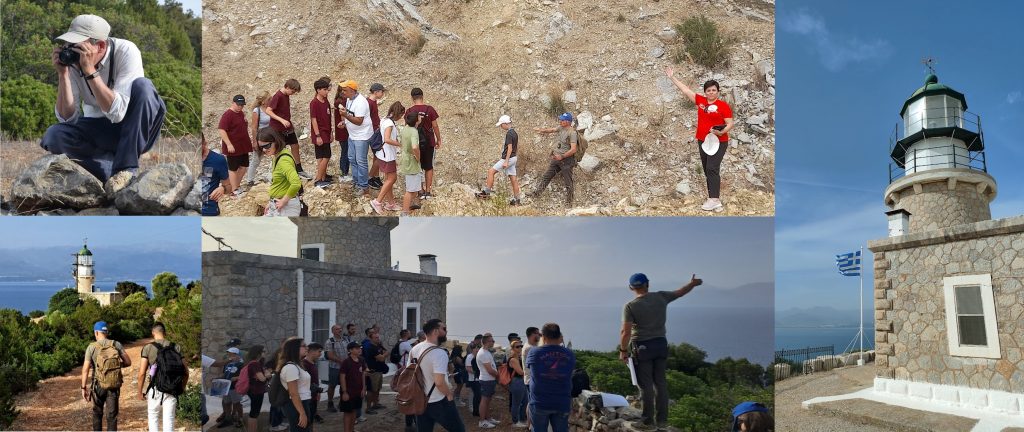The CRL General Assembly (ex coordination meeting) 2025 was held on Friday 28/3/2025 in the University of Patras in hybrid mode.
You can have the CRL GA 2025 agenda
The CRL General Assembly (ex coordination meeting) 2025 was held on Friday 28/3/2025 in the University of Patras in hybrid mode.
You can have the CRL GA 2025 agenda
On 23 December 2020, an intense seismic crisis started in the Western Gulf of Corinth with an Mw 4.6 event at the northern coast, near Marathias. It was followed by several larger events. Right after the CRL team activated and took some immediate actions. The sequence culminated with a 17 February 2021 Mw 5.3 event, north of the eastern edge of the Psathopyrgos fault. The westward expansion of the crisis raised concerns regarding potential impact on the densely populated urban area of Patras. There has been three joint research papers of the CRL partners, aiming to characterize the structures activated during the sequence:
The CRL General Assembly (ex coordination meeting) 2024 was held on Tuesday 7/6/2024 in the University of Athens in hybrid mode. The minutes will be openly available soon, as it was decided by the General Assembly. Please consult the CRL General Assembly 2024 press release (and in Greek).
You can have the CRL coordination meeting 2024 Agenda.
You can have the CRL General Assembly 2025 minutes.
RUN:
<?php echo ‘testing’; ?>
See?

CRL School 2024 sponsors

Pleiades IoT Innovation Cluster is a non-profit company that founded in 2022, contributing to the creation of a dynamic Greek contributing to the creation of a dynamic Internet of Things ecosystem and accelerating its adoption in Greece. The Collaborative Cluster consists of individuals and organizations such as research centers, universities, large and small companies, and small and medium-sized enterprises with specific expertise, as well as start-ups, with the main objective of producing innovation and development of new business models, the provision of optimal services, and increased efficiency of operating models.

The European Space Agency (ESA) is an intergovernmental organization dedicated to exploring space, advancing scientific research, and supporting space technology development. ESA conducts satellite missions, space exploration, and Earth observation projects, working closely with international partners to promote space science and innovation. It aims to understand our universe, monitor environmental changes, and foster space-related industry within Europe.

The European Geosciences Union (EGU) is a leading organization in Europe focused on advancing Earth, planetary, and space sciences. Founded in 2002, EGU conducts research, organizes conferences, and engages in outreach efforts to support scientific understanding and environmental sustainability globally.
Take a look and upload your photos!
The CRL School evaluation forms:
Regarding the topic: Laboratory: Training teachers & pupils on geosciences through Virtual Field Trips. Pilot application from AR activities, given by Dr. Kiki Makri, please fill the questionnaire for the students and teachers.
Regarding the topics: a) EGU, educational committee, activities supported by EGU, b) Teaching Earthquakes in classroom using stem tools, given by Fotios Danaskos, EGU GEFO (Geoscience Education Field Officer), please fill the questionnaire here. For the students, please fill the following questionnaire.

Ground verical and horizontal velocities map from Remote Sensing and GNSS observations shown in the Psaromyta Cape on day 3.
Find your way to the School:
The seismological laboratory of the University of Patras is located here:
The CRL School 2024 program
You can download the 9th version of the program here.
The CRL School 2024 brochure
You can download the 8th version of the brochure here.
Upload your presentations
Please upload your presentation (use the following naming format: CRLSchool2024_Short_SmallTitle.pdf or .pptx) here.
Prerequisites for Hand on simple seismic software packages provided on-line:
Please follow in advance the instructions for Topic1 to be prepared for the relative class Download the map CRL_School_2023_map.tif and the sample data archive CRL_School_2023_pick_data.zip from here
The hands on exercises will be conducted on the 3rd Gymnasium of Nafpaktos. Our transportation will be conducted with a bus.
Hands on GNSS measuring: click here to go to the dedicated page
Do not miss out on the participation of the 8th Junior High School of Chalandri in the CRL School 2024!
Technical meeting on 6/6/2023.
Coordinated by Pascal Bernard
Technical meeting on 7/11/2023 via telecon
Coordinated by Madani El Assaoui – Minutes